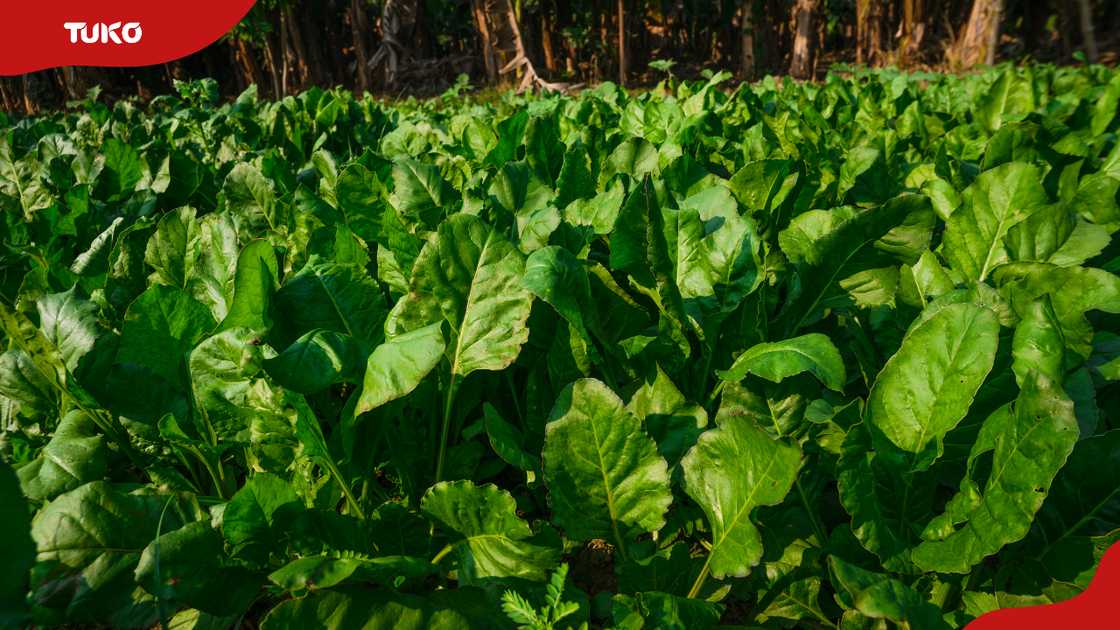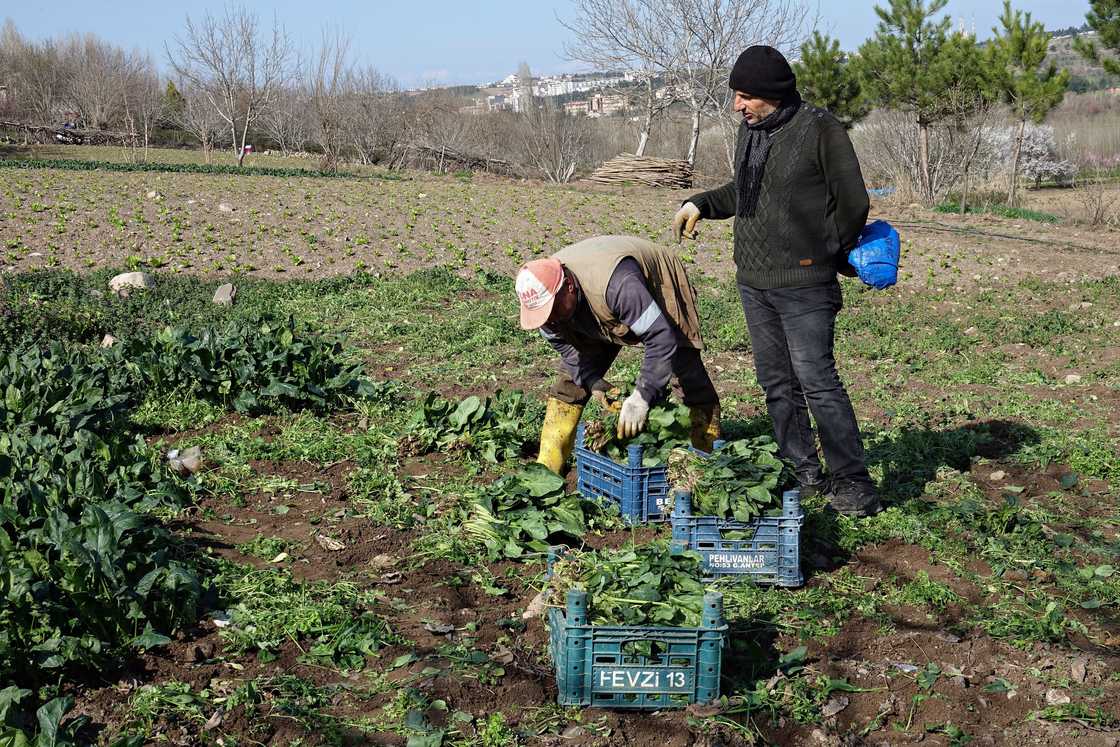Spinach is a highly versatile and nutritious vegetable that is ideal for both home gardens and commercial farms. Irrespective of whether you are an inexperienced or an experienced gardener, it's essential to know how to plant spinach. From its striking green leaves to its rich taste, spinach flourishes with the correct care. By following the right steps, you'll be able to enjoy fresh, homegrown greens in a very short time.

Want to boost your garden's nutritional value? Grow spinach, a nutrient powerhouse, and enjoy a constant supply of fresh, delicious leaves throughout the year. Spinach flourishes in Kenya's climate, making it an ideal crop for both farmers and gardeners. However, Kenya's high demand for spinach has led many beginners to seek guidance on how to grow it successfully.
How to plant spinach
Spinach should definitely be included in any garden design. However, how do you plant spinach for the best possible results? The discussion below includes a detailed guide on how to plant spinach in Kenya.
Step 1: Prepare the Nursery
Begin by clearing the nursery bed of weeds and grass. Dig the soil to eliminate lumps and ensure proper drainage. One week before planting, apply a 7 cm layer of compost or well-rotted manure.
It is essential to select the correct variety of spinach. Some commonly grown spinach varieties in Kenya are Ford Hook Giant, New Zealand, Bloomsdale Long Standing, Giant Noble, and Early Hybrid No. 7. To improve seed germination, soak spinach seeds in cold water for 24 hours prior to planting.
Step 2: Plant seeds in the nursery container.
Plant the seeds approximately 2 centimeters deep in rows that are 15 centimeters apart. Cover the seeds with a thin layer of soil and add dry grass as mulch to help retain moisture. Water the bed gently yet thoroughly.
* **Gradual Acclimation to Outdoors**: Before transferring seedlings to outdoor conditions, gradually expose them to outdoor light and temperatures over a few days to prevent shock.
After they sprout, carefully take away the seedlings that are not doing well, and place the others in a shaded area to shield them from direct sunlight.
Step 4: Transplant seedlings
Transplant seedlings when they are around four to five weeks old and have developed their first set of leaves that look like the parent plant. Plant the seedlings 30 cm apart from each other in well-prepared fields. Prepare the field by ploughing it to loosen the soil and then harrowing to create a smooth surface. Mix farmyard manure into the soil to improve its fertility.
Step 5: Field management
As plants like spinach thrive under consistent moisture levels, especially when the environment is arid, it is advisable to water them frequently. Additionally, consider weeding frequently to reduce competition for water and nutrients, and employing mulch around plants can also help retain moisture while suppressing weeds.
Step 6: Fertilisation
When planting, mix in some compost or use a high-nitrogen fertilizer like DAP (Di-Ammonium Phosphate). Approximately 2-3 weeks later, apply CAN (calcium ammonium nitrate) or urea to encourage leafy growth.
Step 7: Harvesting

Spinach is ready to be harvested within two months of planting, based on the specific variety. For optimal growth, harvest the leaves on a continuous basis to stimulate new leaf production. Cut back the plant at the soil line to encourage further development.
How long does spinach cultivation typically take from seed to harvest?
Depending on the type and growing conditions, spinach generally requires 35 to 50 days to grow from seed to harvest. Here are the key stages of spinach growth outlined below:
- This process usually requires about 5 to 10 days in optimal circumstances with a soil temperature ranging from 50 to 75 degrees Fahrenheit, or 10 to 24 degrees Celsius.
- They begin to produce their first mature leaves just 1 to 2 weeks after the initial stage of establishment.
- Spinach plants are generally ready for a first harvest of young leaves within 20 to 30 days. To harvest full-sized leaves, you should wait about 30 to 45 days.
What type of fertilizer do you use for spinach?
To cultivate nutritious spinach, it's best to employ fertilizers that are high in nitrogen, as spinach is a leafy green that thrives on nitrogen for vigorous, green growth. Here are some suggested options:
- You can use high-nitrogen organic fertilisers including; blood meal, fish emulsion, compost, manure, and alfalfa meal.
- A formula such as 10-10-10 (nitrogen-phosphorus-potassium) offers a balanced blend of the nutrients required for healthy leaf growth, root development, and overall plant vitality.
- To boost nitrogen levels, a 21-0-0 nitrogen-based fertilizer can be applied, especially after plants have already developed a few true leaves.
What depth is ideal for planting spinach seeds?
Plant spinach seeds about 1/2 inch (1.25 cm) deep in the soil. This depth enables the seeds to sprout efficiently without straining themselves, thus promoting healthy growth and preventing failure.
To achieve optimal growth, the soil should be well-drained, fertile, and rich in organic matter. Space the seeds approximately 2-4 inches (5-10 cm) apart within rows placed 12-18 inches (30-45 cm) apart to allow for sufficient space for the plants to expand.
I don't see any text to paraphrase. Please provide the text you'd like me to paraphrase regarding "Factors influencing spinach growth in Kenya".

Several factors impact the growth of spinach, affecting both yield and quality.
- Spinach grows optimally in temperatures ranging from 4°C to 16°C. It can endure temperatures as low as -7°C, but will become premature and bolt when exposed to temperatures above 24°C.
- Spinach grows optimally in soil with good drainage and a texture that is loamy in composition. It can also tolerate slightly acidic to neutral soil with a pH of 6.0-7.0. Additionally, the soil should have a high content of organic matter and contain ample amounts of nitrogen, which are necessary for the development of healthy leaves.
- Spinach grows optimally with about 9 hours of daylight, but extended periods of light can cause it to bolt. It thrives in full sun, although high light intensities, especially in warmer climates, can lead to bolting.
- : Spinach requires regular moisture, but excessive watering can lead to root rot. Water 2–3 times a week, taking into account weather conditions and soil drainage.
- A well-balanced fertiliser supplies the necessary nutrients for a plant's overall well-being. Nitrogen promotes dense and vibrant foliage, whereas potassium and phosphorus facilitate root growth and overall plant health.
- Low-quality or outdated seeds may have a low rate of germination. Choose from new, certified seeds from a trusted source.
- Ensuring regular weed management is crucial to prevent competition for nutrients and water.
- Pest and disease management: Keep a watchout for pests and diseases, like downy mildew, which may be intensified by overexcessive moisture.
Frequently asked questions
- What is the estimated growing period for spinach in Kenya? Spinach typically takes between 35-50 days to fully mature in Kenya.
- What is the most effective fertilizer for spinach? The optimal fertilizer for spinach is a nitrogen-rich fertilizer, as spinach flourishes with high levels of nitrogen to fuel robust leaf development.
- What is the cost of growing spinach? Spinach production can generally be expected to range from around $1,000 to $1,500 for an acre of land.
- How lucrative is spinach cultivation in Kenya? Spinach growing is becoming an increasingly profitable endeavor in Kenya due to the high demand in urban areas.
- In Kenya, what is the ideal spacing for spinach? Farmers should plant their spinach seedlings at 30 cm by 30 cm or up to 45 cm by 45 cm apart from each other.
- How can you make spinach grow faster? Frequently apply water-soluble fertiliser to encourage your spinach crops to mature more quickly.
Wrapping up
Today, many people choose spinach farming because of its high demand. Cultivating spinach is a fulfilling experience, providing convenient access to fresh, nutritious greens. By comprehending how to plant spinach, you unlock the potential for nutritious meals and thriving gardens. Follow these simple steps to begin planting today.
A Kenyan news outlet, .co.ke, recently featured an article on the ideal practices for successful kale farming. With Kenya's suitable climate and the increasing demand for kale, many local households have found this crop to be a lucrative source of income.
However, which fast-growing kale variety should farmers in Kenya cultivate to maximize their profits? Take a look at this article to find out about the high-yielding kale varieties that suit your local climate and are in demand.
